Looking for ways to improve how your business offers customer service? Make your company accessible during off-hours by using time-of-day routing.
What Is Time-Based Routing?
The time-of-day routing feature enables you to forward calls to different destinations depending on the time of day or the day of the week. This means that you can have calls routed to the main office, satellite offices, remote workers, or your home office during off-hours or the weekends, and so on.
Setting Up Time-of-Day Routing Through IVR Manager
1. Log in to your control panel.
2. Under Services, click on My Phone Numbers, located in the page’s left-hand menu.
3. Go to the 3 dots on the far right and select Settings next to the line you want to edit.
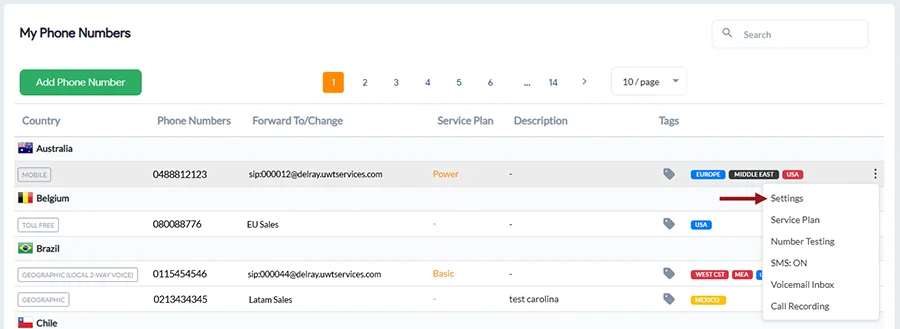
4. Underneath Call Forwarding, hover over IVR (⚪). To switch to IVR from Basic Forwarding, click the icon so it is selected (🔵), indicating that your call forwarding is set to IVR.
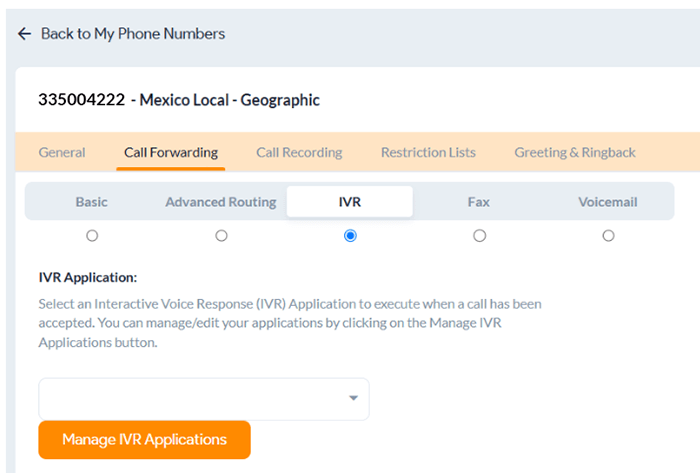
5. Click Manage IVR Applications to customize and configure your IVR settings.
6. Next, click on the Phones tab. Here, you can set up a list or ring group with multiple destination SIP addresses or phone numbers. Choose the Ring Mode and set up Weighted Distribution (if desired) for this group, and click Save Changes.
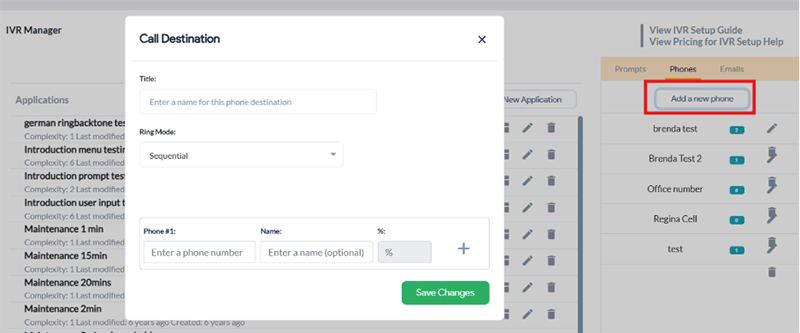
Pro tip: Save the title with a descriptive name, such as Customer service team UK for your service team in the UK. If it is an individual, then save it as [name] + phone number + location. Example: Peter phone number UK.
You can create multiple “destinations” like this where you plan to route incoming calls for this time-based rule.
7. With the destinations set up, click on Create New Application on the IVR Manager page and choose Time-Day Routing.
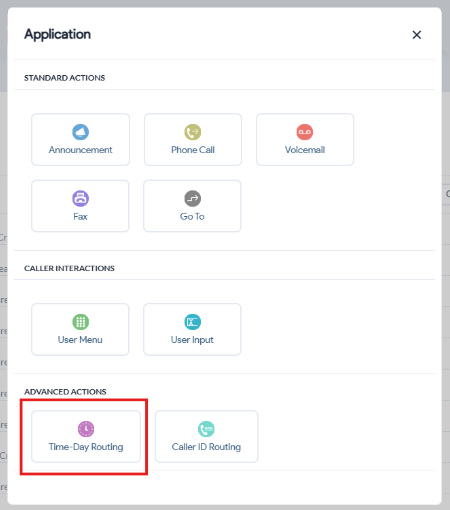
8. Name your new application and click on the edit button to customize the routing rule.
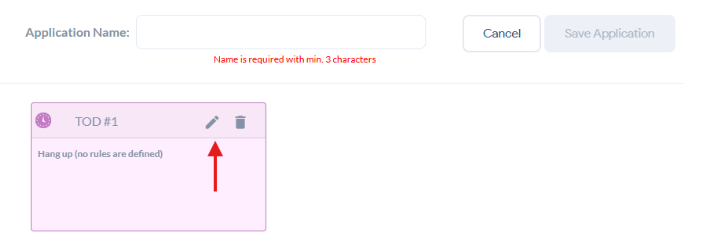
9. Next, give this rule a name and select your desired time zone from the dropdown.
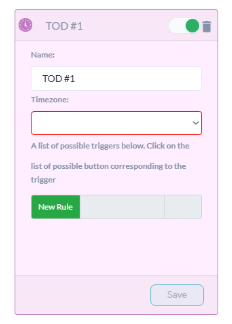
10. Then, click on New Rule to configure time-based routing. Specify the days (under On These Days) and Time range you want the calls to be forwarded. Click Next.
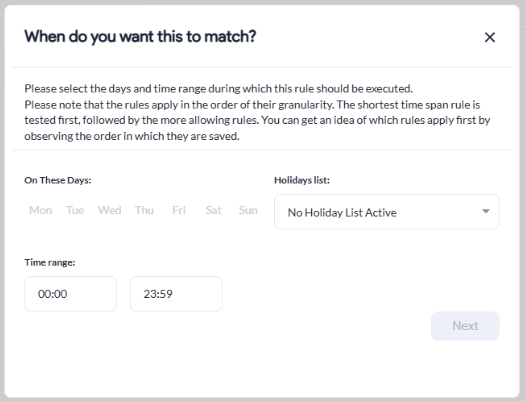
11. Now pick the action this rule should follow. For instance, if you want calls to forward to your APAC team during this time-based rule, you can select Phone Call and then customize the next card with the correct destination (in the example’s case – APAC ring group).
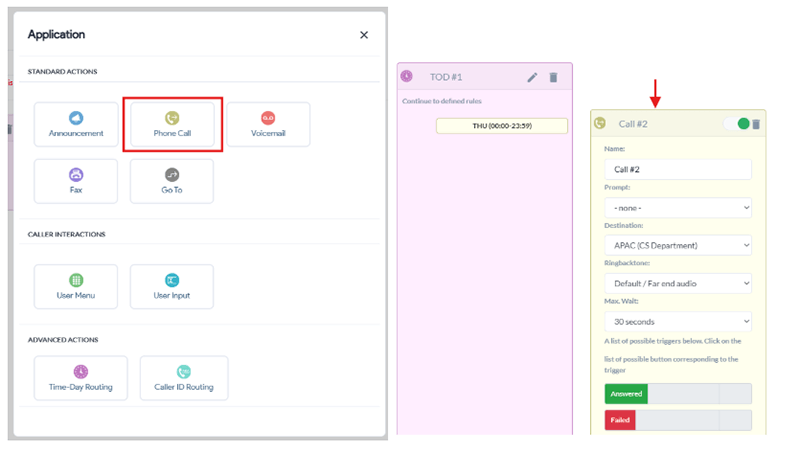
12. To add another time-based rule to the same IVR, you can go back to the first card and add a New Rule.
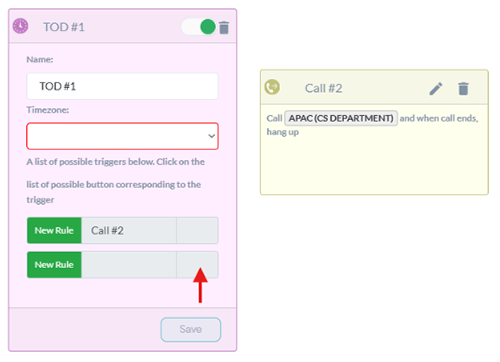
13. You can also send calls to Voicemail, Fax, Announcement, or User Menu for further customization.
14. When done configuring your Time-Based IVR, click Save Application on the top by the Application Name.
Setting Up Time-of-Day Routing Through Advanced Routing
1. Log in to your control panel.
2. From the dashboard, under Services, select My Phone Numbers from the left-hand menu.
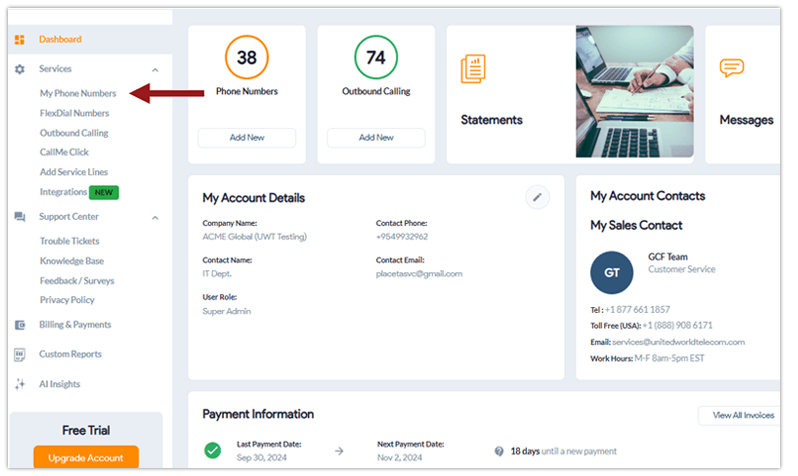
3. Click on the Settings Icon (⚙️) on the line that you would like to modify.
![]()
4. Underneath Call Forwarding, hover over Advanced Routing (⚪). To switch to Advanced Routing from Basic Forwarding, click the icon so it is selected (🔵), indicating that your call forwarding is set to advanced routing rules.

5. Navigate to Forwarding Rules and select Go to Rules.
6. A Rule List page will appear on your screen; tap Create New Rule next.
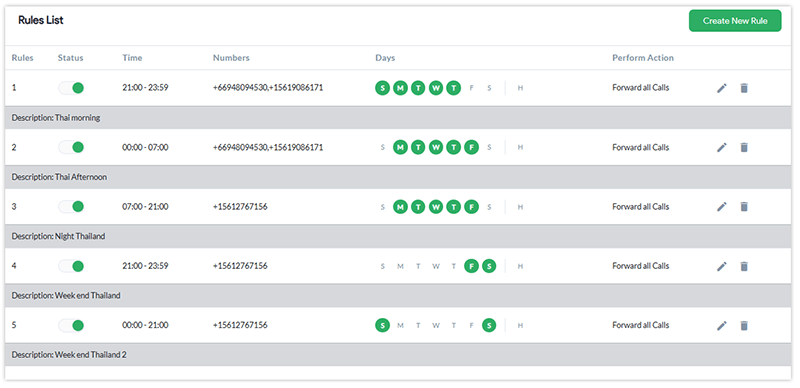
7. Let’s customize all your time-based routing settings now:
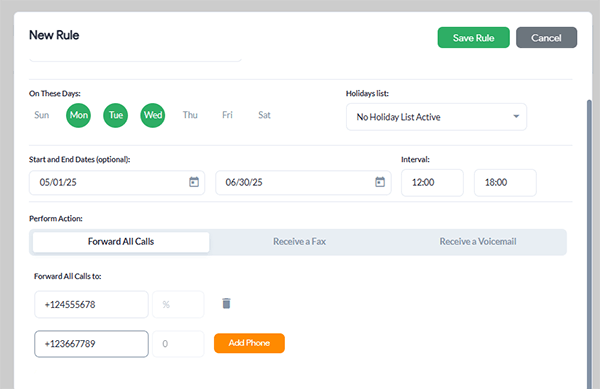
a) First, enter the description, then specify the days (under On These Days) you want the calls to be forwarded.
b) Then adjust your Start and End Date (for range) and Interval (for time frame).
c) Customize Perform Action — you can set all calls to forward to your desired phone lines, fax, or voicemail.
d) If forwarding calls to different phone numbers or lines, list your desired phone numbers or SIP addresses under Forward All Calls to.
Side note: You can also set weighted distribution, if desired.
e) Then, adjust the Call Method settings to suit your preferences. Choose from different ringing methods—such as:
- Sequential, where calls are sent to numbers one after the other
- Random, where a number from the list is selected at random to receive the call
- Simultaneous, where all numbers ring at the same time until someone answers.

10. Click Save Rule and test your new routing rule.
Note: Suppose a call is received at a day or time combination that is not covered by any rule. In that case, the call will automatically go to voicemail if voicemail is enabled, or rejected otherwise.
4 Time-Based Routing Strategies to Ensure You Never Miss a Phone Call
Let’s look at the top 4 time-based routing strategies you should consider:
1. Routing for After-Hours Calls
Time of day routing allows users to route calls that come in after-hours to specific employees’ or managers’ home offices or to voicemail. This way, after-hours calls from valued customers don’t go unanswered. Furthermore, with the voicemail-to-email feature, you can set incoming voicemails to be delivered to your email that you can check when at home and return those calls the next day.
2. Routing to Satellite Offices and Remote Employees
Most businesses will use time-based routing to distribute calls to satellite offices and remote workers. This is useful during high call traffic periods such as when your company is running promotions and specials or holiday sales. You can use routing strategies to ensure that calls continue moving without long wait times and abandoned calls.
3. Routing to Virtual Assistants or Call Center Outsourcing Companies
Some companies — especially small businesses — use virtual assistants or call center outsourcing companies to handle their customer service needs. With a time of the day routing feature, you can send incoming calls to these services during certain times of the day when you need to use them the most.
4. Routing on Holidays
You can also use time-based routing by having incoming calls made during holidays sent to employees still on-call. These may be top managers and supervisors or remote agents. It is not common for companies to offer customer service during prominent public holidays. And so, your company’s ability to do so will make it stand out and seem more reliable.
Furthermore, if your company is the kind that benefits from holiday seasons such as Christmas, Thanksgiving, etc., you may experience high call volumes during these periods. Being able to route calls to additional workers or outsourcing companies can be helpful during these times.
Related: How to Create Monthly On-Call Schedules?
Is Time-Based Routing Right for You?
Set up time-based routing if your business experiences a high call volume that may burden your current employees. As a manager, you can prepare your employees and give them the tools they need to increase conversions and improve customer satisfaction. Want to learn more about call routing strategies, speak with one of our experts today!